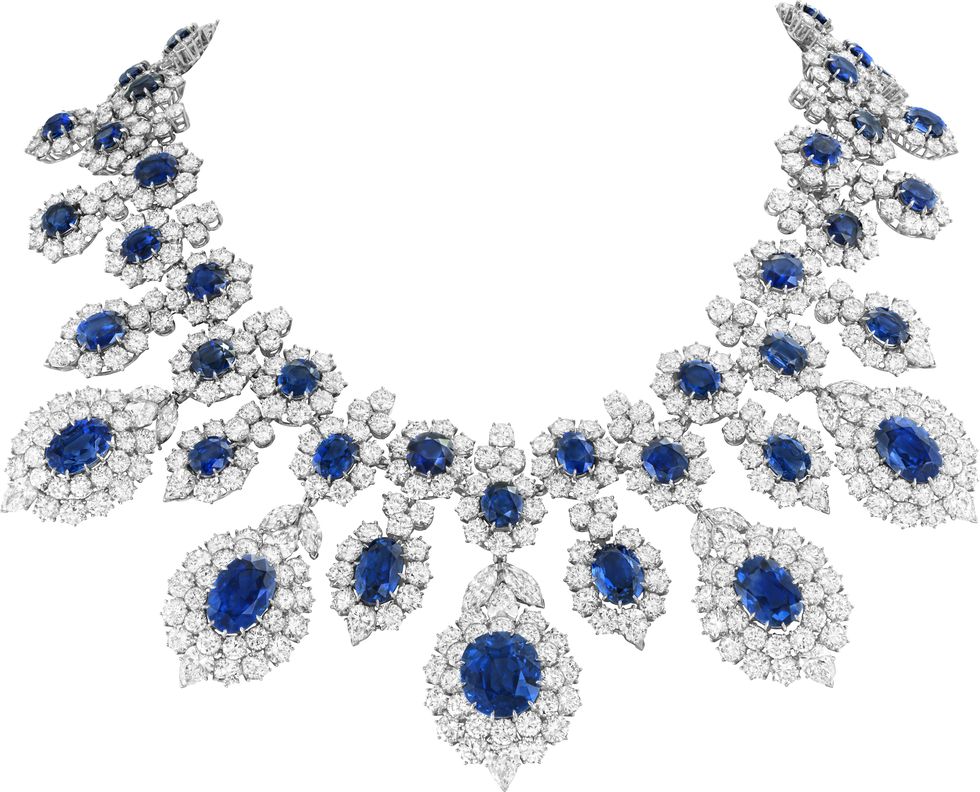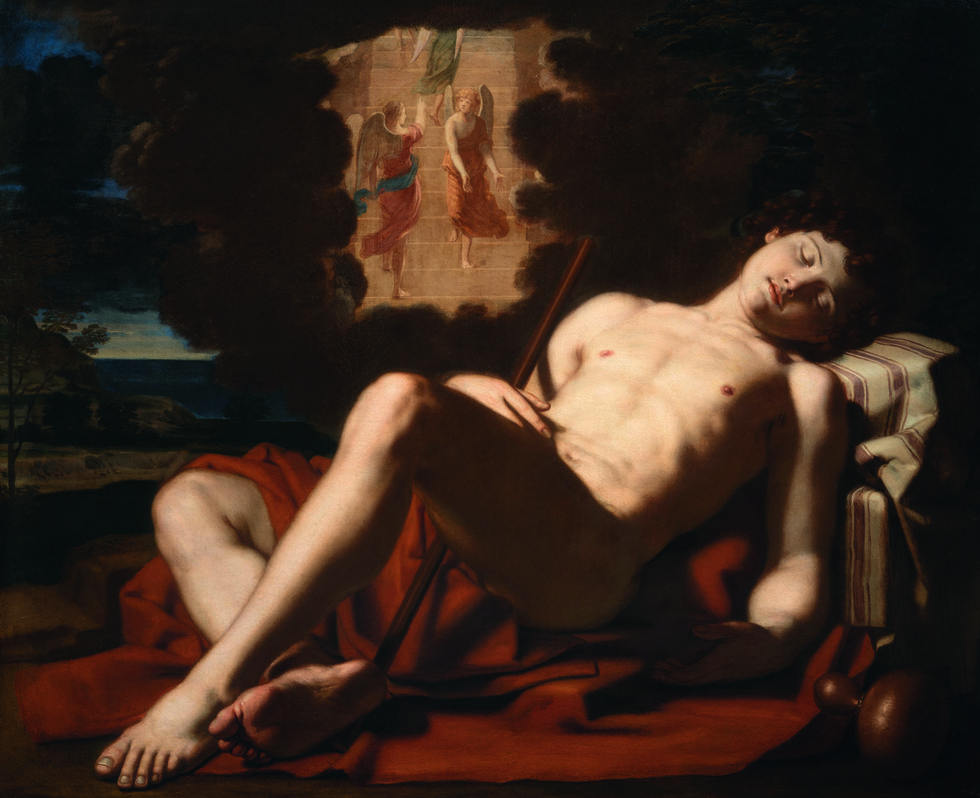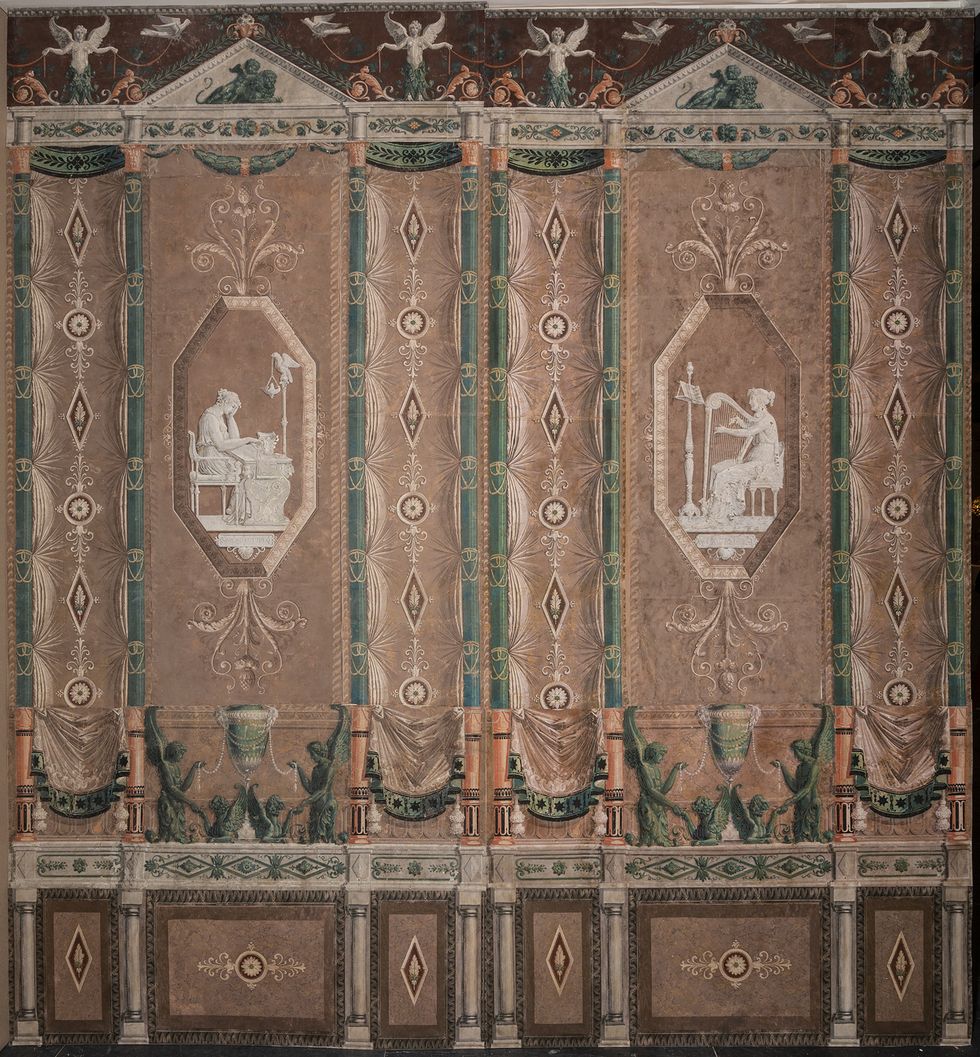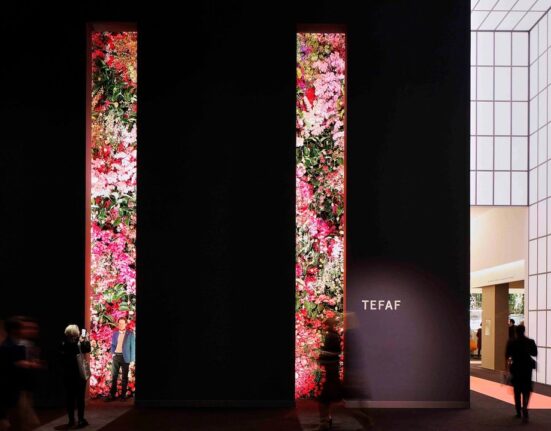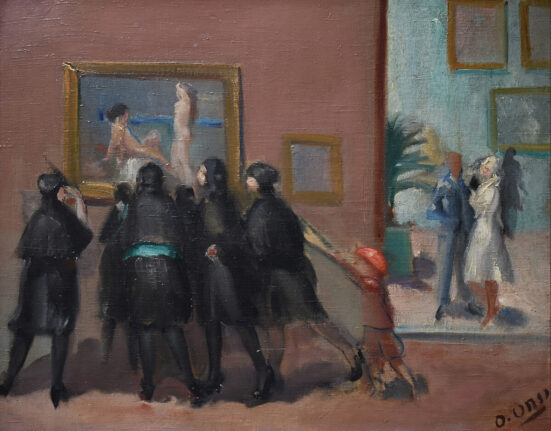Hundreds of private jets had begun streaming into the airport. More than 100,000 individual flowers had been delivered, as had the 11,000 oysters and 3,400 bottles of champagne that would be shucked and poured over the course of six days, keeping all the gathered UHNWIs—not to mention reps from the greatest arts institutions in the world—just tipsy enough to want to say yes to a six-figure 16th-century Flemish tapestry, or two.
TEFAF Maastricht, crown jewel of European fine art fairs, made a grand post-pandemic return this week for its 35th edition, its first since March 2020, when the event had to be shut down early after a gallerist contracted the coronavirus. (2022 wasn’t without its share of drama: four armed robbers attempted a brazen daylight heist on Tuesday, forcing a temporary evacuation.)
Even with a slimmer exhibitor list this year—242 as opposed to 280—the scene in the sprawling convention center in the historic Netherlands city of Maastricht, birthplace of the euro, was impressive. Just by the volume of collectors, curators, and conservators who showed up for VIP previews last week, one thing was clear: the Old Masters aren’t dead yet.
Representing 7,000 years of art, antiques, and antiquities, with modern and contemporary art just a tiny sliver of it, TEFAF has long held a reputation as the true connoisseur’s fair. “The biggest portion of the fair are the antiquaires,” says dealer and TEFAF chairman Hidde van Seggelen. “You can find furniture, tapestries, silver, clocks. We have so much expertise under one roof.”
Whereas Basel and Frieze tend to attract a very see and be seen sort of crowd, here the people come strictly for the art. And this is a group that understands the value of history and craftsmanship—and the in-person experience. One percenters may no longer have qualms about purchasing multimillion-dollar works online but how does one appreciate the exquisite details of a rare allegorical wallpaper created by Percier et Fontaine, architects to Napoleon, whose original drawing sits in the Musée des Arts Décoratifs, without seeing it up close IRL? Or admire the fine detail of a Meissen porcelain service with royal provenance through a computer screen? Or get the bragging rights to be the first to lay eyes on a rediscovered work by 17th century Dutch painter Jan Lievens, which had been missing since 1888?
Of course none of this matters until the checkbooks come out. Some highlights: the Met acquired two antiques from London dealer Joost van den Bergh; Thomas Coulbourn & Sons sold a wine cooler for €225,000; Dr Jörn Günther Rare Books sold manuscripts by Gregory IX and Boccaccio for a combined price that exceeded €1 million; a painting of Virgin and Child by Madrid gallery Caylus went for €1.5 million.
Notably absent at the fair were NFTs. “Art history is not about the now,” van Seggelen says. “And to be honest I haven’t seen that much excitement in terms of creativity with these NFTs.”

Editor
Leena Kim is an editor at Town & Country, where she covers travel, jewelry, education, weddings, and culture.


